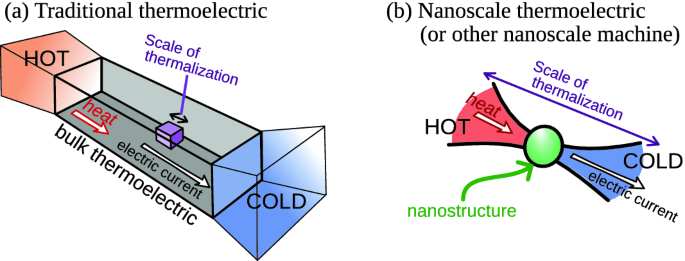Introduction
The world of quantum physics is a realm of bizarre and counterintuitive phenomena, where particles can exist in multiple states at once, teleport over vast distances, and entangle in ways that defy classical intuition. Amidst this mystique, a concept known as quantum phase transitions stands as a testament to the profound strangeness of the quantum realm. In this blog post, we embark on a journey into the heart of quantum phase transitions, seeking to understand how they redefine the states of matter in the quantum universe.
What are Quantum Phase Transitions?
To grasp the concept of quantum phase transitions, one must first understand the notion of a quantum state. In quantum mechanics, a system’s state is described by a mathematical object called a wave function, which encapsulates all the information about that system. Quantum phase transitions occur when a quantum system undergoes a dramatic change in its ground state—a fundamental shift akin to changing the fundamental nature of matter.
In classical physics, phase transitions are familiar occurrences. When water freezes into ice or boils into vapor, it undergoes a phase transition, changing from one state of matter to another. Quantum phase transitions, however, are a whole different beast. They occur at temperatures near absolute zero, where classical physics takes a back seat, and the bizarre laws of quantum mechanics rule the show.
The Significance of Quantum Phase Transitions
Why are quantum phase transitions significant? One reason is that they reveal the profound influence of quantum fluctuations on matter. Classical phase transitions are driven by thermal fluctuations, but in the quantum world, even at absolute zero, particles never truly come to rest. This inherent uncertainty, a consequence of Heisenberg’s uncertainty principle, leads to quantum fluctuations that can tip the balance between different quantum states.
Understanding quantum phase transitions is not just an academic pursuit. They play a crucial role in various fields, from condensed matter physics to quantum computing. Researchers are leveraging the principles of quantum phase transitions to develop novel materials with remarkable properties, such as high-temperature superconductors and topological insulators. These materials could revolutionize technology by enabling more efficient energy transmission and storage or unlocking the potential of quantum computers.
Types of Quantum Phase Transitions
Quantum phase transitions come in different flavors, depending on the nature of the system and the underlying interactions between particles. Here are some common types:
Ising-Type Transitions: Named after the physicist Ernst Ising, these transitions occur in systems with binary states, like spins in a magnetic material. The famous Ising model helps us understand how these transitions take place, providing insights into phenomena like ferromagnetism.
Mott Insulator-Metal Transitions: In certain materials, electrons can either be localized or delocalized, leading to the transition between insulating and conducting states. This transition has implications for the development of new electronic devices and technologies.
Superfluid-Mott Insulator Transitions: In ultracold atomic gases, a transition can occur between a superfluid state, where particles flow without resistance, and a Mott insulator state, where particles are localized in discrete sites. This transition has been observed experimentally and has intriguing implications for quantum simulators and quantum computing.
Bose-Einstein Condensation (BEC) Transitions: BEC transitions involve a drastic change in the behavior of a gas of bosons (particles that can occupy the same quantum state). At low temperatures, these particles can condense into a single quantum state, leading to exotic phenomena such as superfluidity and interference patterns.
Experimental Insights into Quantum Phase Transitions
The study of quantum phase transitions often requires extreme conditions—ultracold temperatures, high magnetic fields, and sophisticated equipment. Researchers have used a variety of experimental techniques to explore these transitions, including neutron scattering, nuclear magnetic resonance (NMR), and ultracold atom traps.
One groundbreaking experiment involved cooling a gas of potassium-39 atoms to extremely low temperatures. At a critical point, the gas underwent a transition from a normal state to a superfluid state, marked by a sudden drop in viscosity. This experiment provided direct evidence of a quantum phase transition and showcased the power of manipulating quantum systems in the lab.
Quantum Phase Transitions and Quantum Computing
The potential of quantum phase transitions extends beyond fundamental physics and materials science. It intersects with the realm of quantum computing, a field poised to revolutionize information processing. Quantum computers rely on qubits, the quantum analogs of classical bits, which can exist in superpositions of states.
Researchers are exploring how quantum phase transitions can be harnessed to improve the performance of quantum algorithms. Quantum annealing, a technique that leverages quantum phase transitions, has been proposed as a way to solve complex optimization problems more efficiently than classical computers.
Applications and Future Prospects
The study of quantum phase transitions is still in its infancy, but it holds immense promise for various applications. Here are some exciting prospects:
High-Temperature Superconductors: Discovering new materials with higher superconducting temperatures could revolutionize energy transmission and storage, leading to more efficient power grids and transportation systems.
Quantum Computers: Quantum phase transitions could play a crucial role in the development of more powerful quantum computers, paving the way for advancements in cryptography, drug discovery, and optimization.
Quantum Simulators: By simulating complex quantum systems, researchers can gain insights into phenomena that are otherwise difficult to study. Quantum simulators could shed light on the behavior of exotic materials or the dynamics of quantum systems.
Quantum Sensing: Quantum phase transitions may enable the development of highly sensitive quantum sensors, revolutionizing fields like medical imaging and environmental monitoring.
Conclusion
Quantum phase transitions are enigmatic phenomena that bridge the gap between the quantum and classical worlds. They offer profound insights into the behavior of matter at the quantum level and have the potential to reshape industries ranging from electronics to computing. As our understanding of these transitions deepens and our ability to manipulate quantum systems advances, we can expect a new era of innovation and discovery in the quantum realm, where the laws of physics are anything but ordinary. The journey through quantum phase transitions continues to unlock the mysteries of the quantum universe, opening doors to a future where the impossible becomes possible.




